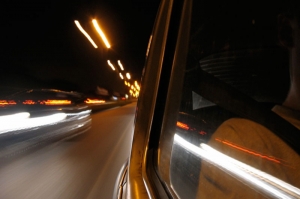 Do your employees drive for long hours at a time? Are they on the road late at night or in the wee hours of the morning? If so, there’s a good chance they could be at risk for falling asleep while behind the wheel. In fact, according to the National Highway Traffic and Safety Administration, drowsy driving results in as many as 100,000 police-reported vehicle crashes every year, with more than 1,500 fatalities and 71,000 injuries. Why? Because when a driver is sleepy, their attention and reaction time decrease significantly, putting them and others on the road in danger.
Do your employees drive for long hours at a time? Are they on the road late at night or in the wee hours of the morning? If so, there’s a good chance they could be at risk for falling asleep while behind the wheel. In fact, according to the National Highway Traffic and Safety Administration, drowsy driving results in as many as 100,000 police-reported vehicle crashes every year, with more than 1,500 fatalities and 71,000 injuries. Why? Because when a driver is sleepy, their attention and reaction time decrease significantly, putting them and others on the road in danger.
What’s worse is that drowsy driving crashes tend to occur at a higher speed than other types of crashes. This is because the driver is semi-unconscious or totally asleep and makes no effort at all to attempt to prevent the crash.
Startling Drowsy Driving Statistics
While most people are well aware of the dangers of driving while under the influence of alcohol or drugs, many don’t realize that drowsy driving can be equally as perilous. In fact, getting behind the wheel when sleep deprived actually has very similar effects on drivers’ judgment, performance and reaction times.
A few facts and statistics around drowsy driving include:
- A study by the AAA Foundation for Traffic Safety estimated that 328,000 drowsy driving crashes occur on an annual basis.
- Commercial drivers are at a significantly higher risk for crashes caused by drowsiness. The reasons for this include the long hours on the road and high number of miles they need to drive as part of their jobs. Additionally, many of these drivers tend to be more at risk for a variety of sleep disorders.
- Shift workers who work night shifts, double shifts or swing shifts are also six times more likely to be involved in a drowsy driving crash.
- Business travelers are also at a higher risk for a drowsy driving crash, as they travel across time zones, suffer from jet lag, too little sleep, and spend many hours driving to get to their destination.
- A Gallup poll estimated that 7.5 million drivers had nodded off while driving in the past month.
- Driving after going more than 20 hours without sleep is the equivalent of driving with a blood alcohol content of .08 percent, which is the U.S. legal limit.
- NHTSA estimates fatigue-related crashes resulting in injury or death cost society $109 billion annually, not including property damage.
Ways to Avoid Drowsy Driving
If your employees have driving responsibilities as part of their job requirement, make sure they understand how to avoid drowsy driving so they stay as safe as possible on the road. Encourage them to get enough rest before a long driving trip, shooting for a range of seven to nine hours of sleep. They should also take frequent breaks every 100 miles or every two hours, especially if they’ll be driving overnight. If they start to feel tired, irritable or unable to concentrate, they should stop driving immediately and take a break.
If your employees drive at odd hours or for long amounts of time, it’s important to make sure they know the risks of drowsy driving. The first step is to employ a corporate driver training program for your company drivers, so they can learn the skills they need to reduce accidents caused by drowsy driving and gain more confidence on the road. Contact us for more information.